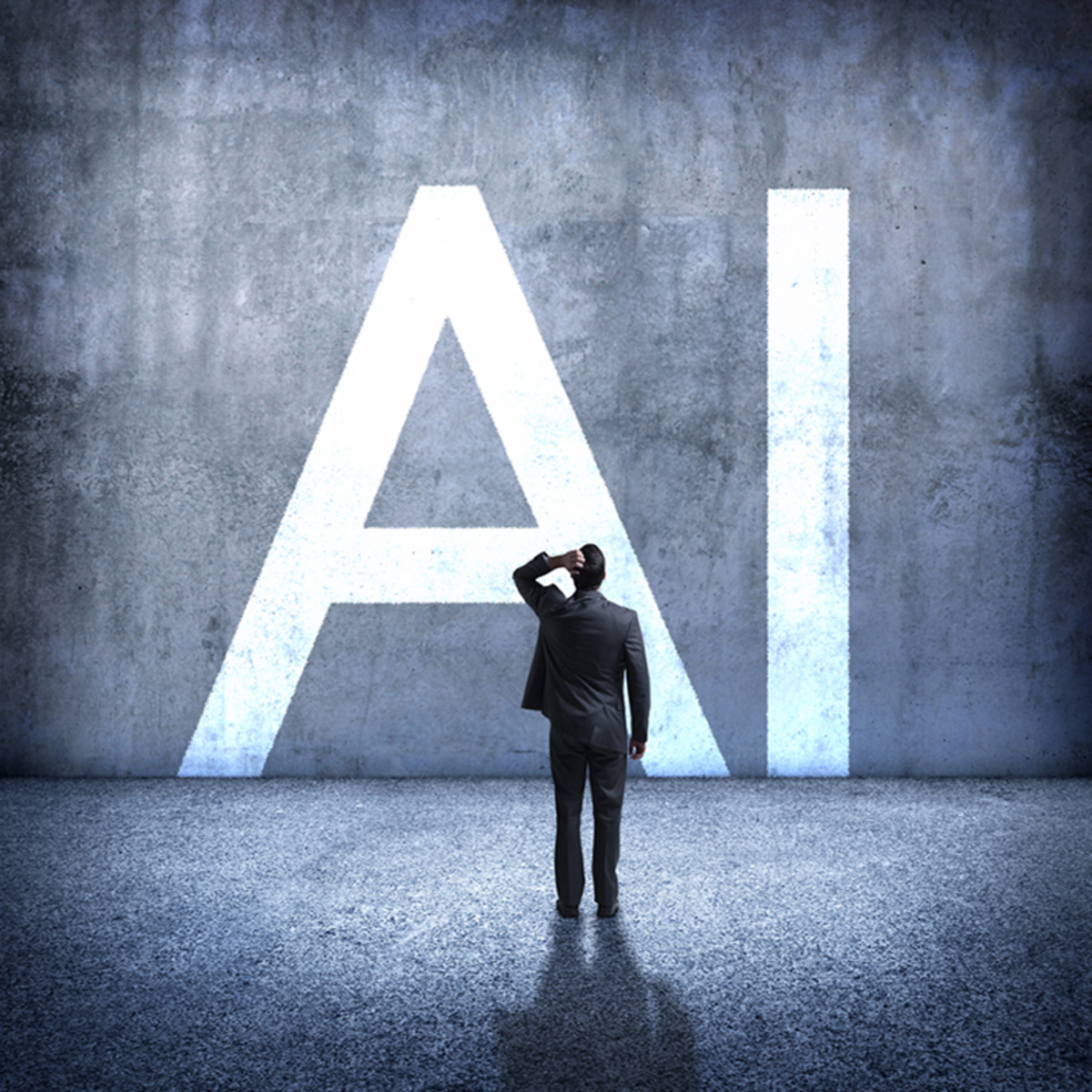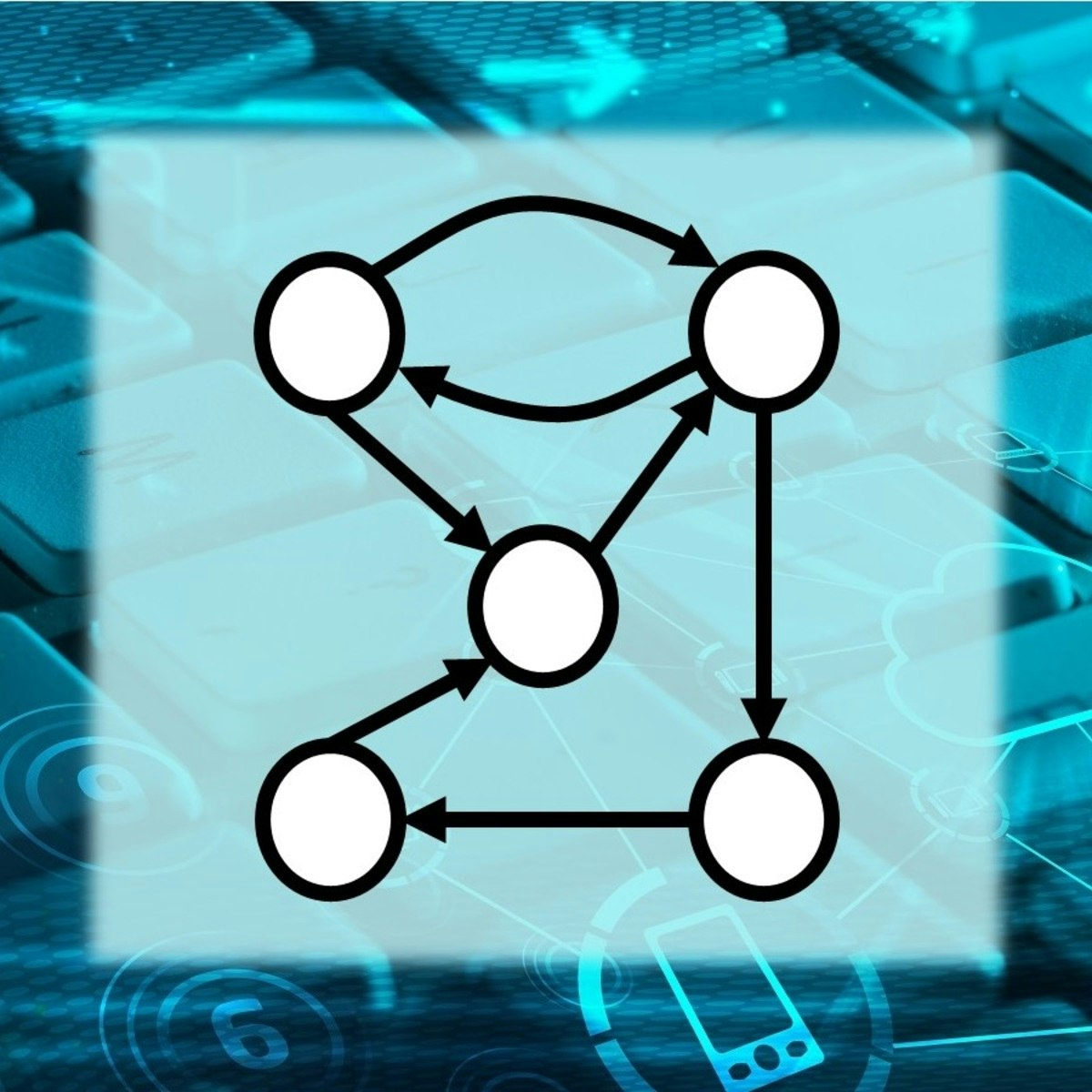Algorithms
Understanding Algorithms: A Comprehensive Guide
At a high level, an algorithm is a finite sequence of well-defined, step-by-step instructions designed to solve a specific problem or perform a computation. Think of it like a recipe: you have inputs (ingredients), a set of instructions to follow (the recipe steps), and an expected output (the finished dish). Algorithms are the fundamental building blocks of computer science and are used in virtually every aspect of modern technology, from the search engines we use daily to the complex systems that power artificial intelligence.
Working with algorithms can be incredibly engaging. There's the intellectual thrill of designing elegant solutions to complex problems, the satisfaction of seeing your creations efficiently process data and deliver results, and the excitement of being at forefront of technological innovation. From optimizing routes for delivery services to developing life-saving medical diagnostic tools, the applications of algorithms are vast and impactful.
What are Algorithms? A Deeper Dive
While the concept of an algorithm as a set of instructions is straightforward, the field itself is rich and multifaceted. Algorithms are the core of how computers "think" and make decisions. They are the specifications that guide calculations, data processing, and even automated reasoning. More advanced algorithms can incorporate conditional logic, allowing them to make decisions and follow different paths based on the input data, and even deduce valid inferences.
To be effective, an algorithm must possess several key characteristics. It needs to be clear and unambiguous, meaning each step is precisely defined. It must have clearly defined inputs and produce at least one expected output. Crucially, an algorithm must be finite, meaning it will always terminate after a specific number of steps. Each step must also be effective, simple enough to be carried out exactly and in a finite amount of time, and feasible with available resources. Finally, a well-designed algorithm is language-independent; it's a logical process that isn't tied to a specific programming language.
The study of algorithms also involves understanding their efficiency. This is often described using "Big O notation," which characterizes how an algorithm's runtime or memory usage grows as the input size increases. This analysis is critical for developing solutions that can scale to handle large datasets and complex problems.
Explain Like I'm 5: Algorithms
Imagine you want to find your favorite red block in a big box of mixed-up toy blocks. An algorithm is like a set of rules you give to a robot to help it find the red block.
A simple algorithm might be:
- Pick up a block.
- Is it red?
- If yes, hooray! You found it. Stop.
- If no, put it aside.
- Are there more blocks in the box?
- If yes, go back to step 1.
- If no, you're done, and the red block wasn't there.
This is a step-by-step plan. The robot follows these exact steps. If you give it a different box of blocks (different input), it will still follow the same rules to try and find a red block (produce an output). Some rules might be faster than others. For example, if all the red blocks are at the bottom, an algorithm that tells the robot to empty the box and look at the bottom first might be quicker! Computer scientists think about how to make these rules (algorithms) as clear and fast as possible for all sorts of tasks, not just finding blocks.
Historical Evolution of Algorithms
The concept of a step-by-step procedure for solving problems isn't new; it stretches back to ancient times. Evidence of algorithmic thinking can be found in various ancient civilizations.
Ancient Roots
Mathematicians in ancient Babylonia, around 2500 BC, used algorithms for calculations, and some of the earliest evidence of a division algorithm was found on a Sumerian clay tablet from that era. Ancient Egyptians, around 1550 BC, also documented algorithmic procedures for arithmetic in texts like the Rhind Mathematical Papyrus. Greek mathematicians made significant contributions, with famous examples like Euclid’s algorithm for finding the greatest common divisor (around 300 BC) and the Sieve of Eratosthenes for finding prime numbers. Indian mathematics, from around 800 BC, also shows evidence of algorithmic procedures. The Persian polymath Muhammad ibn Mūsā al-Khwārizmī, working around the 9th century AD, is a pivotal figure. His work on systematic methods for solving linear and quadratic equations laid foundational concepts for algebra, and the very word "algorithm" is derived from the Latinized version of his name, "Algorithmi". He also played a crucial role in introducing the Hindu-Arabic numeral system (including zero and a base-ten decimal system) to the Western world, a system fundamental to modern computing.
The Computational Revolution
The 19th century saw critical developments that paved the way for modern computing. Charles Babbage designed the Analytical Engine, a theoretical general-purpose mechanical computer, and Ada Lovelace, a mathematician, is credited with writing the first algorithm intended for processing on such a machine. This has led to her being called "history's first programmer". George Boole's invention of Boolean algebra in 1847 provided the logical foundation for computer code.
The 20th century brought about the formalization of algorithms. Alan Turing, a British mathematician, made groundbreaking contributions with the concept of the "Turing machine" in 1936. This abstract model of computation helped define the limits of what can be computed algorithmically and is a cornerstone of theoretical computer science. The development of the von Neumann architecture, which describes the design of an electronic digital computer with a processing unit and a separate storage unit for instructions and data, was another crucial milestone.
Modern Developments
The advent of electronic computers dramatically accelerated the development and application of algorithms. Today, algorithms are at the heart of countless technologies. The ongoing "computational revolution" continues with advancements in areas like machine learning, where algorithms are designed to learn from data and improve their performance over time without being explicitly programmed for each specific task. These machine learning algorithms power everything from recommendation systems to self-driving cars.
The historical journey of algorithms, from ancient mathematical procedures to the sophisticated code running our digital world, highlights a continuous human endeavor to solve problems systematically and efficiently. Understanding this evolution provides valuable context for anyone looking to delve into the field of algorithms today.
These courses offer a look into the theoretical and practical aspects of algorithms, suitable for those with some programming background.
For those interested in the foundational texts that have shaped the study of algorithms, these books are highly recommended.
Core Algorithmic Concepts
To truly understand algorithms, one must become familiar with several core concepts that underpin their design, analysis, and implementation. These concepts provide the language and tools for discussing and comparing different algorithmic approaches.
Time and Space Complexity (Big O Notation)
One of the most crucial aspects of evaluating an algorithm is its efficiency. How much time does it take to run? How much memory does it consume? Big O notation is a mathematical notation used to describe the limiting behavior of a function when the argument tends towards a particular value or infinity. In computer science, it's widely used to classify algorithms according to how their run time or space requirements grow as the input size grows.
For example, an algorithm with O(n) time complexity (linear time) means its execution time grows linearly with the input size 'n'. An algorithm with O(n²) time complexity (quadratic time) will see its execution time grow quadratically with the input size, becoming much slower for large inputs. Understanding Big O notation is fundamental for choosing the most efficient algorithm for a given problem, especially when dealing with large datasets.
These courses can help you build a strong understanding of algorithmic complexity and Big O notation, which is essential for writing efficient code.
Algorithmic Paradigms
Several common strategies or paradigms are used in designing algorithms. Knowing these paradigms can help in approaching new problems.
Divide and Conquer: This approach involves breaking down a problem into smaller, more manageable sub-problems, solving these sub-problems (often recursively), and then combining their solutions to solve the original problem. Classic examples include Merge Sort and Quick Sort.
Dynamic Programming: This technique is used when a problem can be broken down into overlapping sub-problems that can be solved independently and their results stored (memoized) to avoid redundant computations. It's often applied to optimization problems. The Fibonacci sequence calculation is a common example.
Greedy Algorithms: A greedy algorithm makes the locally optimal choice at each step with the hope of finding a global optimum. While not always leading to the optimal solution for all problems, greedy algorithms can be very efficient and provide good approximations for many. Dijkstra's algorithm for shortest paths is a greedy algorithm.
Backtracking: This is an algorithmic technique for solving problems recursively by trying to build a solution incrementally, one piece at a time, removing those solutions that fail to satisfy the constraints of the problem at any point in time. The N-Queens puzzle is a classic backtracking problem.
Many online courses provide in-depth explanations and examples of these algorithmic paradigms.
Graph Algorithms
Graphs are versatile data structures used to model relationships between objects. Many real-world problems can be represented as graph problems, making graph algorithms essential. Key graph algorithms include:
Breadth-First Search (BFS): An algorithm for traversing or searching tree or graph data structures. It starts at the tree root (or some arbitrary node of a graph, sometimes referred to as a 'search key') and explores all of the neighbor nodes at the present depth prior to moving on to the nodes at the next depth level.
Depth-First Search (DFS): Another algorithm for traversing or searching tree or graph data structures. The algorithm starts at the root node (selecting some arbitrary node as the root node in the case of a graph) and explores as far as possible along each branch before backtracking.
Dijkstra’s Algorithm: An algorithm for finding the shortest paths between nodes in a graph, which may represent, for example, road networks. It picks the unvisited vertex with the lowest distance, calculates the distance through it to each unvisited neighbor, and updates the neighbor's distance if smaller.
Minimum Spanning Tree (MST) Algorithms (e.g., Prim's, Kruskal's): These algorithms find a subset of the edges of a connected, edge-weighted undirected graph that connects all the vertices together, without any cycles and with the minimum possible total edge weight.
For those wishing to delve into these core concepts, the following resources can be beneficial:
[course] Advanced Algorithmics and Graph Theory with PythonApplications of Algorithms in Industry
Algorithms are not just theoretical constructs; they are the workhorses behind many technologies and processes that shape our daily lives and drive various industries. Their ability to process vast amounts of data, identify patterns, and automate decision-making has made them indispensable.
Finance: Algorithmic Trading and Risk Assessment
In the financial sector, algorithms are extensively used for algorithmic trading, where computers make high-frequency trading decisions based on pre-set rules and market data. This allows for faster execution and the ability to capitalize on fleeting market opportunities. Algorithms also play a crucial role in risk assessment, analyzing historical data and market trends to predict potential risks and in fraud detection, identifying suspicious transaction patterns.
Technology: Recommendation Systems and Search Engines
Tech companies heavily rely on algorithms to power their services. Recommendation systems, like those used by Netflix, Amazon, and Spotify, use algorithms to analyze user behavior and preferences to suggest relevant content, products, or music. Search engines like Google employ sophisticated algorithms to rank web pages and deliver the most relevant search results in fractions of a second. These algorithms continuously evolve to provide better user experiences.
Logistics and Supply Chain Optimization
Algorithms are vital for optimizing logistics and supply chains. Companies like FedEx and UPS use route optimization algorithms to find the most efficient delivery paths, considering factors like traffic, distance, and delivery windows, which helps reduce fuel consumption and delivery times. Algorithms also assist in inventory management, demand forecasting, and warehouse optimization, ensuring that goods are in the right place at the right time.
Healthcare: Diagnostics and Treatment Optimization
The healthcare industry is increasingly leveraging algorithms for various applications. Machine learning algorithms can analyze medical images (like X-rays and MRIs) to assist in early disease detection. They are also used to analyze patient data to predict disease risk, personalize treatment plans, and optimize drug discovery processes. For instance, IBM Watson Health uses AI to analyze vast amounts of medical literature and patient data to provide insights for personalized treatment.
Artificial Intelligence and Machine Learning Across Sectors
Beyond these specific examples, Artificial Intelligence (AI) and Machine Learning (ML) algorithms are finding applications in nearly every industry. In manufacturing, AI algorithms are used for predictive maintenance of machinery and quality control. In retail, they power personalized marketing and customer relationship management. In the energy sector, AI helps optimize energy generation and distribution. As AI technology continues to advance, the range and sophistication of algorithmic applications will only expand. According to a Frost & Sullivan report mentioned in Appventurez, 89% of IT and business decision-makers believe these technologies will drive changes in revenue, efficiency, and customer experience.
These courses provide insight into how algorithms are applied in AI and machine learning contexts across different industries.
Career Progression in Algorithmic Roles
A strong foundation in algorithms can open doors to a variety of rewarding and intellectually stimulating career paths across numerous industries. The ability to design, analyze, and implement efficient algorithms is a highly sought-after skill in today's technology-driven world. The career outlook for roles involving algorithm development is bright, with significant growth projected. For example, the U.S. Bureau of Labor Statistics projects a 22% growth for computer and information research scientists from 2020 to 2030, a field that heavily involves algorithmic work. Some sources indicate an even higher projected growth of 40% for algorithm engineers specifically during the same period.
Entry-Level Opportunities
For individuals starting their careers with a background in algorithms, common entry-level roles include Software Engineer and Data Analyst. In these positions, you might be responsible for implementing existing algorithms, developing new ones for specific features, or analyzing data using algorithmic techniques. A solid understanding of data structures and algorithms, along with proficiency in programming languages like Python, Java, or C++, is typically required. Internships are a valuable way to gain practical experience and build a portfolio.
These courses can help build the foundational programming and problem-solving skills needed for entry-level roles.
Mid-Career Specializations
As you gain experience, you can specialize in areas that heavily rely on advanced algorithmic development. Roles such as AI Researcher, Machine Learning Engineer, or Quantitative Developer (often found in finance) become accessible. These positions often require a deeper understanding of specific algorithmic paradigms, statistical modeling, and the ability to design novel solutions to complex problems. For instance, an AI Researcher might develop new learning algorithms, while a Quant Developer would create and implement algorithms for financial trading strategies.
For those looking to specialize, consider courses that delve into AI and machine learning algorithms.
Advanced Roles and Leadership
With significant experience and a proven track record, professionals can move into advanced roles like Chief Architect, Principal Scientist, or Algorithmic Strategist. These positions often involve leading teams, setting the technical direction for algorithmic development, and tackling the most challenging and impactful problems within an organization. A Ph.D. or extensive research experience may be beneficial or even required for some of these top-tier research and strategy roles, especially in highly specialized fields like advanced AI theory.
The path isn't always a linear progression; it often involves building transferable skills and potentially moving across different domains or specializations as opportunities arise. Continuous learning and staying updated with the latest advancements in algorithmic research and technology are crucial for long-term success in this dynamic field.
Formal Education Pathways for Algorithms
A strong educational foundation is often a key ingredient for a successful career in algorithms. While self-directed learning can be very effective, formal education provides structured knowledge, mentorship, and recognized credentials.
High School Prerequisites
For students aspiring to specialize in algorithms, a solid grounding in mathematics during high school is highly beneficial. Courses in algebra, calculus, discrete mathematics (if available), and logic are particularly relevant. Developing strong problem-solving and analytical thinking skills is also crucial. Early exposure to programming, perhaps through introductory computer science classes or coding clubs, can provide a significant advantage. Learning the fundamentals of at least one programming language will make university-level coursework more accessible.
This introductory course can give high school students a taste of computational thinking and programming.
Undergraduate Coursework
A bachelor's degree in Computer Science, Software Engineering, Mathematics, or a related field is typically the standard entry point for algorithm-focused careers. Core undergraduate coursework usually includes:
- Data Structures: Understanding how data is organized (e.g., arrays, linked lists, trees, graphs) is fundamental, as the choice of data structure significantly impacts an algorithm's efficiency.
- Algorithm Design and Analysis: Courses dedicated to learning various algorithmic techniques (like divide and conquer, dynamic programming, greedy algorithms), analyzing their efficiency (Big O notation), and understanding their applicability.
- Discrete Mathematics: This branch of mathematics deals with countable structures and is essential for formal reasoning about algorithms, including topics like logic, set theory, graph theory, and combinatorics.
- Programming Languages: Proficiency in one or more programming languages (e.g., Python, Java, C++) is necessary to implement and test algorithms.
- Calculus and Linear Algebra: These mathematical disciplines provide tools and concepts used in various areas of algorithm design, particularly in machine learning and optimization.
Many universities offer specialized tracks or elective courses in areas like artificial intelligence, machine learning, or theoretical computer science, allowing students to delve deeper into algorithmic topics.
These courses cover fundamental data structures and algorithms typically found in undergraduate computer science curricula.
Graduate Research Areas and PhD-Level Contributions
For those aspiring to push the boundaries of algorithmic knowledge or work in highly specialized research roles, graduate studies (Master's or Ph.D.) are often necessary. Graduate programs allow for in-depth specialization in areas such as:
- Complexity Theory: Studying the inherent difficulty of computational problems and classifying them based on the resources (time, space) required to solve them.
- Cryptography: Designing and analyzing algorithms for secure communication.
- Quantum Algorithms: Exploring algorithms designed to run on quantum computers, which have the potential to solve certain problems much faster than classical computers.
- Machine Learning Theory: Investigating the mathematical foundations of learning algorithms.
- Algorithmic Game Theory: Analyzing algorithms in settings with strategic agents.
PhD-level research involves making novel contributions to algorithmic theory, developing new algorithms, or proving new properties about existing ones. This path is typically for those passionate about academic research or leading cutting-edge research in industrial labs.
Consider these resources for a deeper academic dive into algorithms.
record:32b1em
Self-Directed Learning and Online Resources
While formal education provides a structured path, the world of algorithms is also highly accessible through self-directed learning and a wealth of online resources. For career pivoters, lifelong learners, or even practitioners looking to upskill, online platforms offer flexible and often affordable ways to master algorithmic concepts.
Online courses are an excellent way to build a foundational understanding or supplement existing knowledge in algorithms. They often provide a mix of video lectures, readings, and coding exercises, allowing learners to progress at their own pace. Many platforms like Coursera and edX host courses from top universities and industry experts. When choosing online courses, it's beneficial to look for those that not only explain the theory but also emphasize practical implementation and problem-solving.
OpenCourser itself is a valuable tool in this journey, allowing learners to easily browse through thousands of courses in computer science, compare syllabi, read summarized reviews, and save interesting options to a list to find the perfect online course. For those looking to explore specific algorithmic topics, OpenCourser's search functionality can pinpoint relevant courses and books from a vast library.
Structured vs. Modular Learning Approaches
When embarking on self-directed learning, you can choose between a structured or a modular approach. A structured approach might involve following a complete specialization or a series of courses that mimic a university curriculum, ensuring comprehensive coverage. For example, Stanford University offers an "Algorithms Specialization" on Coursera which is a four-course program. A modular approach, on the other hand, allows you to pick and choose specific topics or courses based on your immediate needs or interests. This can be great for quickly learning a particular algorithm or data structure.
Many online platforms offer specializations that provide a structured learning path.
Building Portfolio Projects
Theoretical knowledge is essential, but practical application is what truly solidifies understanding and demonstrates capability to potential employers. Building portfolio projects is a fantastic way to apply what you've learned. Examples could include:
- Algorithm Visualizers: Create a tool that visually demonstrates how sorting algorithms (like Bubble Sort, Merge Sort, Quick Sort) or pathfinding algorithms (like Dijkstra's or A*) work.
- Problem Solvers: Implement solutions to classic algorithmic puzzles or challenges from platforms like LeetCode or HackerRank.
- Small Applications: Develop a simple application that utilizes specific algorithms, such as a basic recommendation engine, a file compressor using Huffman coding, or a route planner for a small map.
These projects not only reinforce your learning but also provide tangible evidence of your skills.
Courses that focus on problem-solving and coding challenges can be very helpful for building portfolio-worthy projects.
Combining Theoretical Study with Coding Practice
The most effective way to learn algorithms is to combine theoretical study with hands-on coding practice. Don't just read about an algorithm; implement it yourself in your preferred programming language. Work through examples, debug your code, and try to understand its performance characteristics. Many online courses and textbooks provide coding exercises and challenges. Actively participating in coding communities or forums can also provide support and opportunities to learn from others.
Evaluating Resource Quality and Accreditation
With the abundance of online resources, it's important to evaluate their quality. Look for courses taught by reputable instructors or institutions. Check reviews and ratings from other learners. For more formal recognition, some online courses offer certificates upon completion, and some platforms even offer credentials like MasterTrack® Certificates, where portions of Master's programs are available online. While a certificate itself might not guarantee a job, the skills and knowledge gained, demonstrated through projects and problem-solving abilities, are what truly matter.
The OpenCourser Learner's Guide offers articles on topics such as how to earn a certificate from an online course and how to add it to your resume or LinkedIn profile, which can be helpful for those pursuing self-directed learning pathways.
These books are considered foundational and are excellent for combining theoretical understanding with practical insights.
Ethical Implications of Algorithms
As algorithms become increasingly powerful and pervasive, making decisions that affect various aspects of our lives, it's crucial to consider their ethical implications. From loan applications to content recommendations and even criminal justice, algorithms are shaping outcomes, and with this power comes significant responsibility.
Bias in Machine Learning Models
One of the most significant ethical challenges is bias in machine learning models. Algorithms learn from the data they are trained on. If this data reflects existing societal biases (e.g., regarding race, gender, or socioeconomic status), the algorithm can inadvertently learn and perpetuate these biases, leading to unfair or discriminatory outcomes. For example, an AI recruiting tool might show bias against women if it was trained on historical data where men were predominantly hired for certain roles. Similarly, facial recognition systems have been shown to be less accurate for individuals with darker skin tones if their training data predominantly featured lighter-skinned individuals, which can have serious consequences if used in law enforcement.
Addressing algorithmic bias requires careful attention to data collection, diverse development teams, and ongoing auditing of algorithmic performance across different demographic groups.
This course specifically addresses the design of fair algorithms.
Privacy Concerns in Data-Driven Algorithms
Many algorithms, especially in AI and machine learning, rely on vast amounts of personal data to function effectively. This raises significant privacy concerns. How is this data collected, stored, and used? Are individuals aware of how their data is being utilized to train algorithms that might make decisions about them? The ability of algorithms to draw inferences and make predictions can sometimes reveal sensitive information that individuals did not explicitly share. The Cambridge Analytica scandal, where personal data from Facebook was used for political profiling, is a stark reminder of these risks.
Ensuring data privacy requires robust data governance practices, anonymization techniques where appropriate, and transparency about data usage. Regulations like the GDPR in Europe aim to give individuals more control over their personal data.
Algorithmic Accountability and Transparency
When an algorithm makes a critical decision – for example, denying a loan application or flagging an individual for surveillance – who is accountable if that decision is wrong or harmful? The "black box" nature of some complex algorithms, particularly in deep learning, can make it difficult to understand exactly why a particular decision was made. This lack of transparency (opacity) can hinder efforts to identify and rectify errors or biases.
There's a growing call for algorithmic accountability, which means establishing clear lines of responsibility for the design, deployment, and impact of algorithms. Transparency, or "explainability," in AI aims to make algorithmic decision-making processes more understandable to humans, allowing for better oversight and the ability to challenge decisions.
Regulatory Frameworks and Ethical Guidelines
Recognizing the potential societal impact of algorithms, governments and organizations are beginning to develop regulatory frameworks and ethical guidelines. Initiatives like the EU AI Act aim to categorize AI systems by risk and impose requirements accordingly. Professional organizations and research institutions are also publishing ethical guidelines for AI development and deployment. The goal is to foster innovation while safeguarding fundamental rights and promoting fairness, accountability, and transparency. However, this is an evolving landscape, and much debate continues on how best to regulate rapidly advancing algorithmic technologies without stifling beneficial progress.
It's important for anyone working with or developing algorithms to be aware of these ethical dimensions and to strive to build systems that are not only efficient but also fair, transparent, and respectful of human values. The World Economic Forum provides resources and frameworks for responsible AI development.
Future Trends in Algorithm Development
The field of algorithms is constantly evolving, driven by advances in computing power, new theoretical insights, and the ever-expanding range of problems that can be tackled computationally. Several exciting trends are shaping the future of algorithm development.
Impact of Quantum Computing on Algorithmic Design
Quantum computing, though still in its nascent stages, holds the potential to revolutionize certain types of computation. Quantum algorithms, such as Shor's algorithm for factoring large numbers (which could break much of current cryptography) and Grover's algorithm for searching unsorted databases, operate on entirely different principles than classical algorithms. As quantum hardware matures, there will be a growing need for specialists who can design and implement quantum algorithms to solve problems currently intractable for classical computers, particularly in fields like materials science, drug discovery, and complex optimization.
Bio-Inspired Algorithms
Nature has had billions of years to develop efficient solutions to complex problems. Bio-inspired algorithms draw inspiration from biological systems and processes. Examples include:
- Neural Networks: Inspired by the structure and function of the human brain, neural networks (especially deep learning models) have achieved remarkable success in areas like image recognition, natural language processing, and game playing.
- Genetic Algorithms: These mimic the process of natural selection to find optimal solutions by evolving a population of candidate solutions over generations.
- Swarm Intelligence: Algorithms inspired by the collective behavior of social insects (like ants or bees) or bird flocks, used for optimization and robotics.
Decentralized Algorithms for Blockchain Systems
Blockchain technology, the foundation of cryptocurrencies like Bitcoin, relies on decentralized algorithms for consensus, security, and data management. As blockchain applications expand beyond finance into areas like supply chain management, voting systems, and digital identity, there will be ongoing research and development into more efficient, scalable, and secure decentralized algorithms. This includes algorithms for new consensus mechanisms, smart contract execution, and privacy-preserving computations on distributed ledgers.
Sustainability-Focused Optimization Challenges
As global awareness of environmental challenges grows, there's an increasing focus on using algorithms to address sustainability issues. This includes developing optimization algorithms for:
- Smart Grids: Optimizing energy distribution and consumption to reduce waste and integrate renewable energy sources.
- Sustainable Logistics: Further minimizing fuel consumption and emissions in transportation and supply chains.
- Climate Modeling: Developing more accurate and efficient algorithms for climate prediction and impact assessment.
- Resource Management: Optimizing the use of natural resources like water and agricultural land.
The future of algorithms will likely involve greater collaboration between humans and AI, with algorithms augmenting human capabilities in increasingly sophisticated ways. As noted in a report by IBM, a significant percentage of businesses are already integrating AI, and many more are exploring its potential, indicating a continued drive for algorithmic advancement.
These courses touch upon some of the advanced and emerging areas in algorithms and AI.
Frequently Asked Questions (Career Focus)
Embarking on or transitioning into a career involving algorithms can bring up many questions. Here are answers to some common queries, designed to provide clarity and grounded expectations, especially for those new to the field or considering a pivot.
Do I need a PhD to work in advanced algorithm design?
Not necessarily, but it depends on the definition of "advanced." For many roles involving the application and implementation of complex algorithms, even in areas like machine learning, a Bachelor's or Master's degree in computer science or a related field, coupled with strong practical skills and a good portfolio, can be sufficient. However, if your goal is to conduct fundamental research in algorithmic theory, publish novel algorithms, or work at the absolute cutting edge of fields like quantum algorithm design or theoretical machine learning, a PhD is often expected or highly advantageous. These research-intensive roles typically require the deep specialization and original contribution that a doctoral program fosters.
How competitive are algorithmic roles in tech?
Roles that require strong algorithmic skills, such as Software Engineer, Data Scientist, and Machine Learning Engineer, are generally in high demand. The tech industry, finance, healthcare, and e-commerce are just a few sectors actively seeking individuals who can design, analyze, and implement efficient algorithms. However, because these roles are often well-compensated and intellectually stimulating, competition can be significant, especially at top-tier companies like Google, Microsoft, and Amazon. Strong problem-solving abilities, a solid understanding of core algorithmic concepts, proficiency in relevant programming languages, and practical experience (often demonstrated through projects or internships) are key to standing out. The projected job growth for computer and information research scientists (a category including many algorithm specialists) is significantly faster than the average for all occupations, indicating a robust and growing field.
Can self-taught programmers transition into algorithm-heavy roles?
Yes, it is definitely possible for self-taught programmers to transition into algorithm-heavy roles, but it requires dedication, a structured approach to learning, and a way to demonstrate your skills. Many successful professionals in the field have non-traditional backgrounds. The key is to rigorously study data structures and algorithms, practice consistently (e.g., on platforms like LeetCode, HackerRank), and build a strong portfolio of projects that showcase your algorithmic problem-solving abilities. Online courses and resources are invaluable for self-learners. Networking and contributing to open-source projects can also help build credibility. While a formal degree can provide a structured path and recognized credentials, demonstrated skill and practical experience are highly valued by employers. Be prepared for technical interviews that will thoroughly test your algorithmic knowledge and coding skills.
OpenCourser provides many resources for self-learners. You can browse courses by topic and find materials to build a strong foundation. The Learner's Guide also has articles on creating a self-structured curriculum and staying disciplined.
What industries hire the most algorithm specialists?
Algorithm specialists are in demand across a wide array of industries. Some of the most prominent include:
- Technology: This is perhaps the most obvious, with companies developing search engines, social media platforms, operating systems, cloud computing services, and AI applications all heavily reliant on algorithms.
- Finance: Algorithmic trading, risk management, fraud detection, and credit scoring are major areas.
- Healthcare: Medical image analysis, drug discovery, personalized medicine, and optimizing patient care.
- E-commerce and Retail: Recommendation systems, supply chain optimization, demand forecasting, and personalized marketing.
- Manufacturing: Process optimization, predictive maintenance, quality control, and robotics.
- Automotive: Development of autonomous driving systems, route optimization in navigation, and engine control algorithms.
- Aerospace and Defense: Navigation systems, control systems, data analysis from sensors, and simulations.
- Energy: Optimizing power grids, predicting energy demand, and developing algorithms for renewable energy integration.
How do algorithmic careers fare during economic downturns?
While no career is completely immune to economic downturns, roles requiring strong technical and problem-solving skills, such as those in algorithm development, tend to be relatively resilient. Companies often rely on technology and automation to increase efficiency and reduce costs, especially during challenging economic times. Algorithm specialists who can help optimize processes, analyze data for better decision-making, or develop innovative products can remain valuable assets. Furthermore, many of the industries that heavily employ algorithm specialists (like technology, healthcare, and certain areas of finance) may be less susceptible to some economic shocks or may even see increased demand for their services. However, like any field, hiring freezes or slowdowns can occur. Continuous skill development, adaptability, and a strong professional network are always beneficial, regardless of the economic climate.
Are algorithm skills transferable to non-tech sectors?
Absolutely. The core skills developed through studying and working with algorithms – analytical thinking, problem-solving, logical reasoning, and often data analysis – are highly transferable to a wide range of non-tech sectors. Many industries are increasingly data-driven and are looking for individuals who can make sense of complex information and optimize processes, even if the role isn't explicitly labeled as an "algorithm developer." For example, skills in optimization algorithms could be valuable in logistics, urban planning, or resource management. Data analysis and pattern recognition skills are useful in market research, business intelligence, and even social sciences. The ability to break down complex problems into manageable steps and design systematic solutions is a valuable asset in almost any professional domain. While you might need to acquire some domain-specific knowledge, the fundamental algorithmic thinking is a powerful and versatile tool.
If you are considering a career pivot, remember that the journey requires persistence and a willingness to continuously learn. It's a challenging field, but also an incredibly rewarding one with the potential to make a significant impact. Ground yourself in the fundamentals, practice consistently, and build projects that demonstrate your passion and skills. Even if you find that a deep specialization in pure algorithm design isn't your ultimate goal, the foundational knowledge gained will be invaluable in many tech-adjacent or data-driven roles.
For further reading, these books provide excellent insights into algorithms and their applications.
Useful Links and Further Reading
To continue your exploration of algorithms, here are some helpful resources:
-
General Information and Learning Platforms:
- Khan Academy - Algorithms: Offers introductory lessons on algorithms, including searching, sorting, recursion, and graph theory.
- Coursera - Algorithms Courses: A wide range of algorithms courses from various universities and institutions, suitable for different skill levels.
- edX - Learn Algorithms: Offers courses and programs in algorithms from reputable institutions.
- OpenCourser - Computer Science: Browse a vast catalog of online courses and books related to computer science and algorithms.
-
Ethical Considerations:
- Council of Europe - Common ethical challenges in AI: Discusses ethical issues like bias, autonomy, and opacity in AI algorithms.
- CNIL - The ethics of algorithms: Mapping the debate: A paper providing a map to organize the debate on the ethical importance of algorithmic mediation.
- Harvard Gazette - Ethical concerns mount as AI takes bigger decision-making role: Explores privacy, bias, and the role of human judgment in AI.
-
Industry Trends and Career Insights:
- U.S. Bureau of Labor Statistics - Computer and Information Research Scientists: Provides information on job outlook, pay, and what these scientists do (a field closely related to algorithm specialists).
- Forbes - 15 Amazing Real-World Applications Of AI: Highlights how AI and algorithms are used across various industries.
Embarking on the path to understanding algorithms is a commitment to lifelong learning and problem-solving. Whether your goal is to build the next revolutionary search engine, contribute to ethical AI development, or simply apply algorithmic thinking to new challenges, the journey is rich with intellectual rewards and opportunities to shape the future. We encourage you to explore these resources, dive into online courses, and start building. The world of algorithms awaits your contribution.




























